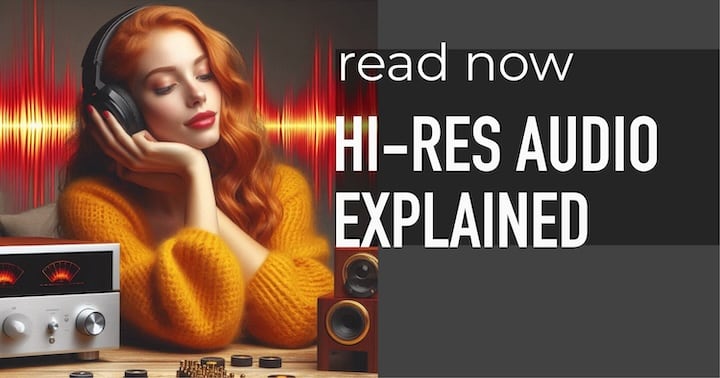
If you are music lover, you heard about high-resolution audio in digital recordings. You most likely look for the best sound. But can hi-res music sound better than CD quality? This quick start guide explains: what means hi-res audio, how do you listen to HD music, could you improve sound via upsampling? In the first approach high-definition quality should be better. However, it's not so easy. Keep reading.

If you buy "AuI ConverteR PROduce-RD" (2023/12.x version) from 24 August 2023 to 24 October 2023, you will get free update to version 2024 (13.x) after its release.
What does Hi-Res Audio do?
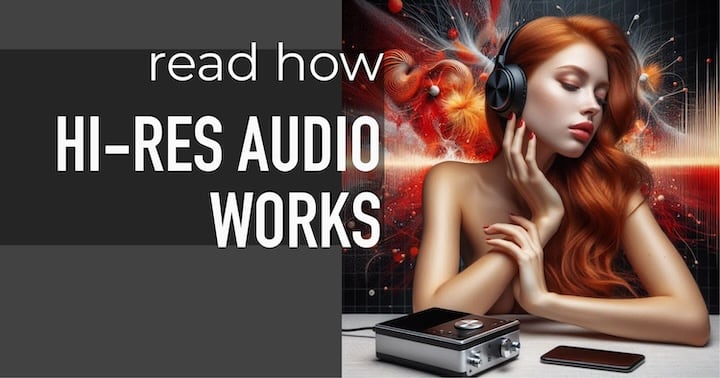
High-resolution audio (hi-res audio, HRA, high definition, HD) is designed as the next step after CD digital quality (44.1 kHz / 16 bit). HRA appears to improve sounding of compact disk.
In simple words, HRA has higher resolution than traditional audio compact disc. From technical point of view, hi-res audio has higher bit depth and sampling rate, than 16-bit and 44100 Hz of CD.

On the consumer market, hi-res audio began to spread in end of 1990's. And now we have a wide range of HD music formats in online stores and audiophile streaming services.
Back to top
Is hi-res audio worth it?
We want to know does hi-res music sound better? The most important advantage of hi-res audio is higher sound quality than CD.
Some people consider high-resolution audio as a useless format that wastes huge space on a hard disk of computer. Many myths are there. They think that the recording of ultrasound is an important feature of HD systems. Other people think that this audio improvement is "marketing gimmick".
But in fact, HRA allows solving some issues of low sampling frequencies.
Do you get benefits? There is no answer the question. It is personal choice. Should you try high resolution? Definitely.
There is nothing terrible. Many modern devices already supports wide range of sampling rates and bit depths. And, you get for free hi-fi music downloads for testing of your setup's abilities. Read about all about it below.
Back to topHow can I listen to HD music?
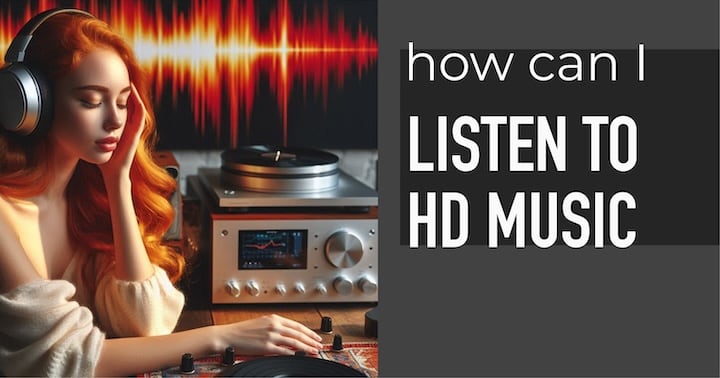
To listening to HD music, you need capable device that is considered below. Also, you can download hi-res audio files in the Internet.
Your loudspeakers or headphones should be qualitative enough.
You can convert the downloaded recording in the music files with various resolutions. Now, you can compare their sound. Let's get started...
To listen to hi-res audio you can use a mobile phone or computer with audio player applications.
Also, hi-fi devices support this format:
- digital audio portable players,
- music servers,
- media players,
- TV,
- online streaming services,
- and others.
You can read more about audio players...
Back to topCan humans hear in hi-res?
High-resolution may solve some distortion issues in the audible range. I.e. high-res solves equipment issues.
The author wants to remind, HD formats don't guarantee high res audio better than CD. It gives abilities only. Bad-made HD system can sound worse than a good-made 44.1 / 16 one.
For certain equipment and recordings, difference between hi-res and CD may be audible. But, there is no technically correct way of comparison.
Below read details about whether can humans hear the high resolution or not.
Back to top
Can humans hear 24-bit audio?
Below we'll consider how a bit depth increasing affects sonic.
In theory, 24-bit has lower distortions than 16-bit resolution.
Practically, there are many factors, that may waste the advantages of the higher resolution.
For instance, a picture is assembled from 100x100 squares and has a size like a home window.
This picture is well visible from 10 steps. The image looks smooth.
We want to increase the distance range (loudness range). I.e., we want to see the picture from both 10 and 100 steps.
So, we should increase the picture size to the size of the home wall.
After it, the square sizes become larger.
But, we want to keep a good look at the smaller 10-step distance too.
And we should use smaller squares in greater numbers: 300 x 300, in instance.
So, to see from 10 steps and 100 ones (both quiet and loud sounds), we need a higher 300x300 resolution instead initial 100x100 one.
Hi-Res audio file formats
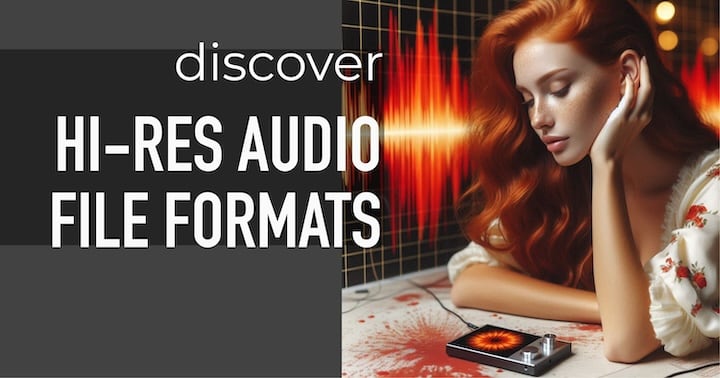
WAV, FLAC, AIFF are most popular audio formats with high sampling rates and bit depths.
DSD (Direct Stream Digital) occupies a special place in family of high-definition recordings. It's 1-bit format with very high sampling rate.
Also, modern lossy data-compressied formats MQA and AAC support hi-res recordings.
- Lossless formats
- AIFF is a widespread format with flexible structure. Size limitation 4 GB.
- WAV is a widespread format with flexible structure. Size limitation 4 GB.
- FLAC (Free Lossless Audio Codec) provides resolution up to 32-bit/384 kHz.
- WAV RF64 is a WAV extension to allow file size above 4 GB. It may have compatibility issues with devices and software.
- WMA lossless is a data-compressed audio format.
- DSF is a DSD audio format. Standard metadata support.
- DFF is a DSD audio format. Metadata-support issues may be there.
- SACD is a physical optical disk with DSD audio.
- SACD ISO is a DSD audio file with ripped image of optical SACD medium.
- DST (Direct Stream Transfer) is a DSD data-comressed format. It's applied for SACD, DFF and SACD ISO.
- MQA (Master Quality Authenticated) is an audiophile data-compression format that provides lossless audio up to 17-bit/96 kHz.
- Lossy formats
Read more about audio formats...
Back to top
Does hi-res audio sound better than CD quality?
In theory, high-resolution audio allows for reduction of distortions that happen for recording and playback in CD quality.
In real life, just a higher sampling rate and bit depth bring nothing without a complex approach to a music system.
And more or less expensive equipment may work better on CD resolution than another device in HD.
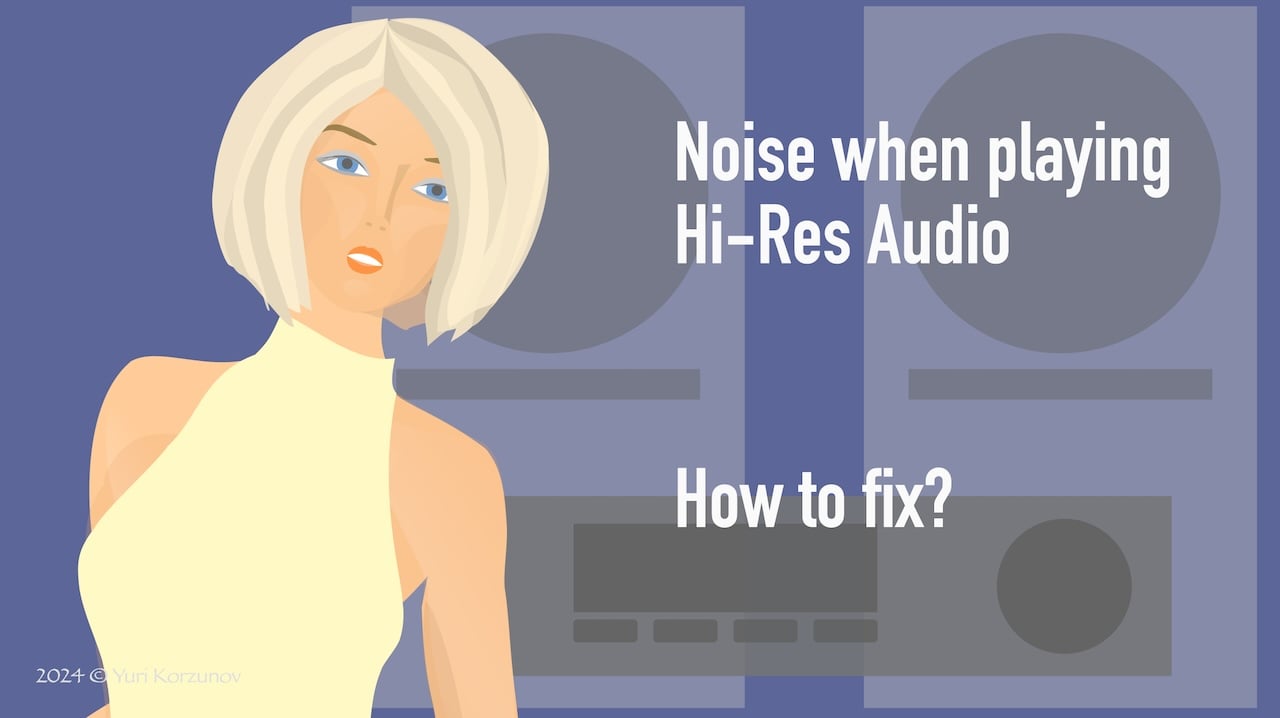
Back to top
Is 320kbps better than hi-res?
Any audio file has a bitrate. Currently, lossy files has bitrate 320 kbps and below. In instance, AAC format can provides high resolution.
As rule, difference between lossy 320kbps and lossless hi-res is subtle. Used software and hardware does matter.
Back to top
Which is better Dolby or Hi-Res Audio?
Dolby Digital supports hi-res and multichannel audio. The tecchnology provides data comnpression.
If the compression in lossless mode, no ditherence between the formats.
Back to top
Can any speaker play hi-res audio?
For speaker, it is not matter, that resolution of digital audio is played back. Some setups are capable to play ultrasound. But, above, we discussed that this sound range is out of primary aim of hi-res music. In the first approach, it doesn't impact to audio quality.
Back to topHow hi-res works?
For a better understanding of the hi-resolution, let’s consider a painting.
- Analog recording is like painting with coarse strokes. It’s beautiful and has its own artistic nature.
However, it is not too close to actual original picture in our eyes.
- CD audio is like to color photo made with old an camera. Some blurring is there. We can see not all subtle details. However, it’s like more to original object.
- High resolution is like to photo in modern digital camera and printed with professional grade. We can see all original image details. No blurring is there.
If these modern camera and printer are not well to do, the result may be worse than the old equipment, which we compared with CD above.
Does high-definition really sound better than CD? There is no simple answer to the question. Keep reading to know details.
click to enlarge to see more details

In the picture, we can see approximate artistic visualization of the format differences. It is not a real distinction. It matters, how these recording/playback systems are done. Nevertheless, we can see general trends.
In instance, analog systems corrupt sounding:
- "Wow and flutter" is tone floating due to fluctuations in the rotation speed of tape or vinyl recording.
- "Tape compression" is a non-linear distortion close to overload level of input signal. It reduces output level softly when the input level is increased linearly.
Some colourization can cause a more "nice" or "interesting" "look" for analogue mediums, if compare with computer sonic. Despite the fact that the last ones are closer to the original acoustical source objectively.
When vinyl recording is produced from studio tape, their distortions are merged in a complicated way.
High resolution does not have these "analog" issues. However, computer recordings may have aliases. They are shown as shifted copies of original signal; in the picture: displaced semitransparent images.
Read tech details:

Read also:
Back to top
Digital recording issues
We haven't full control of a recording level. As example, in classical recordings. Analog signal capturing demands some tricks to avoid overload distortions, that can not be fixed after the record.
Overload is the limitation of output level growth when input level of a device or software continues to increase.
Let's look at an example:
We have an empty pot (a music unit: device or software).
And we are beginning to pour water into the pot (the input level is growing).
The level of the water (output level) is growing. It becomes higher and higher.
When the level achieves the highness of the pot (maximum signal level for the unit), water overflows.
And, after it, the pot's water level is constant despite how much water will be poured (input level growing).
If we take the pot (the unit) with higher walls, overflow is coming after more input water volume (higher input level).
However, reducing the analog signal level at analog-to-digital converter (ADC) input can cause a worse signal-to-noise ratio. Especially, for low-level fragments of a music piece.
So, ADC should have a wider dynamic range, to reduce the risk of damaging the recorded signal.
The inherent noise of a computer signal is called quantization noise. It rises due to the error in measurement of the analog signal that is digitized.
ADC has electrical circuits that produce electrical noise.
In general, the quantization noise should be lower, than ADC's electrical noise.
Example:
ADC's maximum level is 0 dB and the noise floor is -120 dB.
We record a symphony orchestra with 2 microphones.
To avoid overload, we reduce the input analog level of ADC. It gives some loudness reserve. But it degrades the signal-to-noise ratio of quiet musical fragments.
A lesser reserve is more the signal degradation. It happens due to a lower signal-to-noise ratio. The ratio defines waveform purity.
Lower bit depth
If we use a lower bit depth resolution, it can cause quantization noise, that may be higher than the electrical noise floor of the ADC.
In instance, 16 bits cause a quantization noise floor of about -100...110 dB. It's above -120 dB of electrical noise.
And such signal-to-noise ratio falls and the listening experience degrades.
Back to top
Digital Signal Processing
Digital signal processing (DSP) is any kind of manipulations with sonic signal: gain control, equalizer, etc.
Resolution of further signal processing may be increased, to "transparent" work with data for DSP designers.
Read more details in "Does 24-bit sound better than 16-bit?" part below.
There are many questions about the necessity of hi-resolution recordings.
One people thinks, that "excessive" resolution wastes disk space only.
Other people think, that such records are needed to produce ultrasound.
But, in the author's opinion, high-res may be useful due to other reasons. Read "Myths" part below.
High-resolution audio file formats
(sample rates)
High-resolution music file formats
(bit depths)
Opinion, that high res gives advantages always, is not correct for all cases.
Sometimes people, who play records with high sample rates, stumble with unexpected noise or other unwanted audible elements.
In the "Myths" you can watch the video with example.

Could you improve sound via upsampling?

Just changing of sampling rate improves nothing. It is an abstract thing in a vacuum.
But, if you consider a higher sampling rate and bit depth in combination with your musical device, it may give advantages.
Back to topWhere to download hi-res audio?
Hi-res audio samples are available at various online stores and websites.
Here you can download audio files:
- 24-bit / 96 and 192 kHz;
- samples in various high resolutions;
- DSD 64 downloads;
- DSD 128 downloads;
- DSD 256 downloads;
- DSD 512 downloads;
- DSD 1024 downloads;
- Other hi-res downloads;
- Other DSD samples.
Back to top
Conclusion
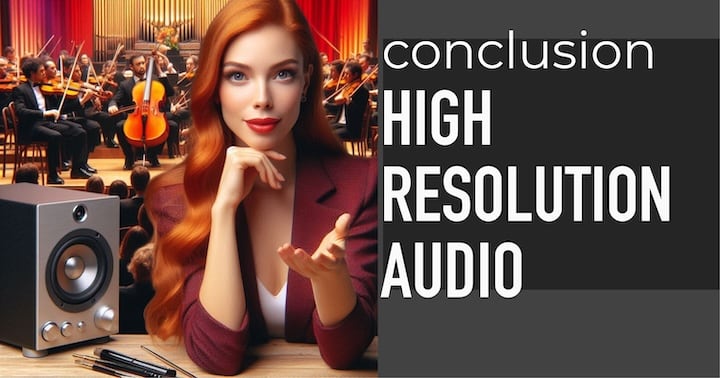
High-resolution audio is a great way to improve sound quality. However, to discover its abilities, proper music equipment and recording may be required.
Audio Basis - articles about audio


